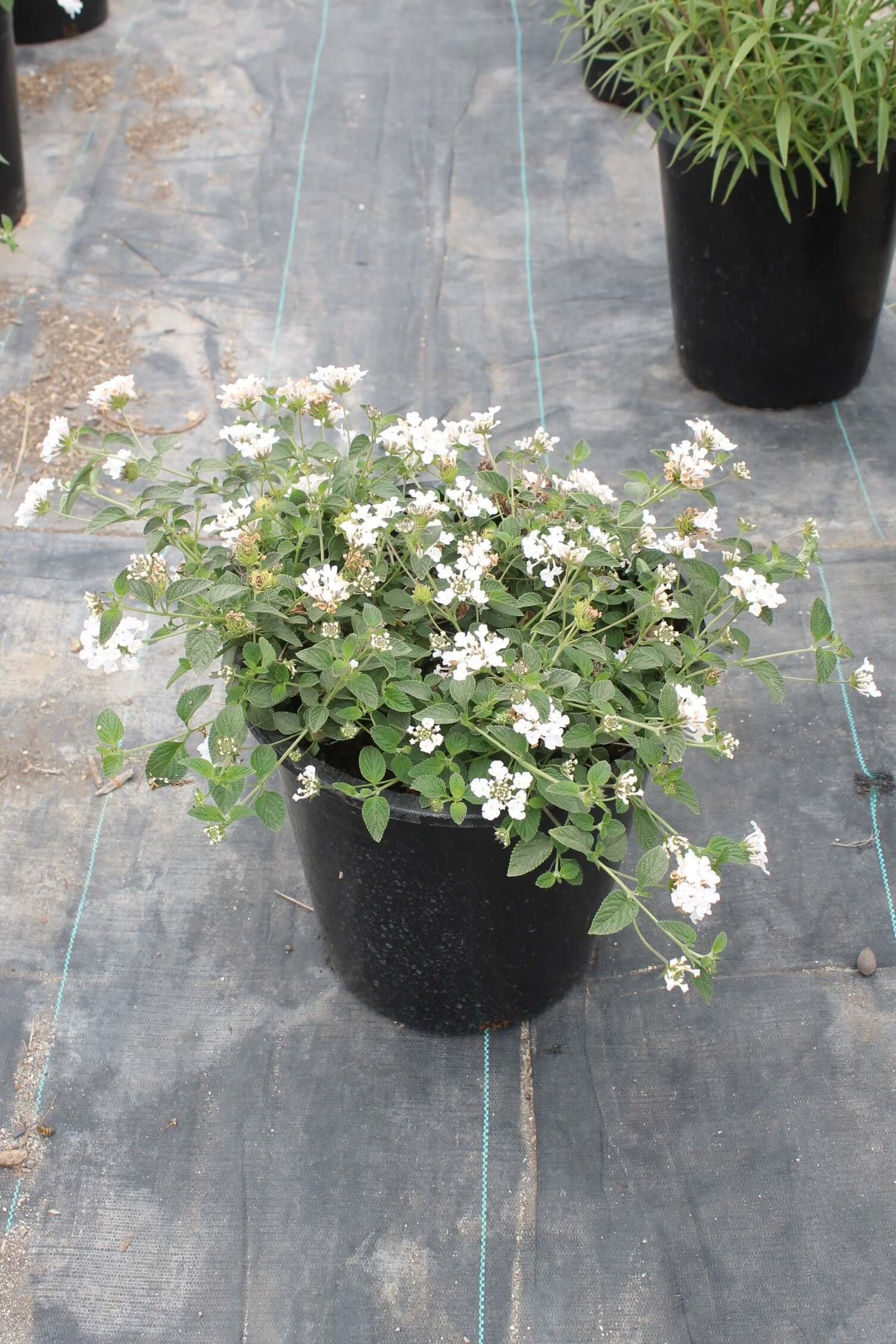White Trailing Lantana is a low-maintenance, drought-tolerant plant that adds beauty and versatility to any garden. It’s known for its trailing growth habit and clusters of small, white flowers. Here’s how to plant and care for it:
Choose the Right Location
- Sunlight: White Trailing Lantana thrives in full sun (at least 6 hours of direct sunlight per day). It can tolerate partial shade, but it will bloom less profusely in shadier spots.
- Climate: This plant is best suited for warmer climates (USDA Zones 9-11). It is frost-sensitive, so in colder areas, it’s often grown as an annual or in containers that can be brought indoors during winter.
Prepare the Soil
- Well-Draining Soil: Lantana prefers well-draining soil and can thrive in sandy, loamy, or rocky soils. It is tolerant of poor soil conditions but does not do well in heavy, waterlogged soil.
- Neutral to Slightly Acidic pH: A slightly acidic to neutral pH (6.0-7.0) is ideal, but the plant can adapt to various soil conditions.
Planting Process
- Dig a Hole: Prepare a hole that’s about twice as wide and the same depth as the root ball of the plant. This will allow the roots to spread out and establish more easily.
- Position the Plant: Remove the White Trailing Lantana from its container and gently loosen the roots if they are compacted. Place the plant in the hole so that the top of the root ball is level with the surrounding soil.
- Backfill and Water: Fill the hole with soil, pressing it down gently to remove air pockets. Water thoroughly to help settle the soil around the roots.
Spacing
- Proper Spacing: If planting multiple lantanas, space them about 2-3 feet apart. This will give them room to spread and fill out, creating a lush, trailing effect.
Mulching
- Apply Mulch: Add a layer of mulch (such as bark chips, wood chips, or straw) around the base of the plant to help retain moisture, regulate soil temperature, and suppress weeds. Keep the mulch a few inches away from the stems to prevent rot.
Watering
- Water Regularly Until Established: During the first growing season, water the lantana regularly to help establish a strong root system. Once established, it is highly drought-tolerant.
- Drought-Tolerant Once Established: Reduce watering frequency after the plant is established. White Trailing Lantana prefers the soil to dry out slightly between waterings. Overwatering can lead to root rot, so it’s important to avoid waterlogged soil.











